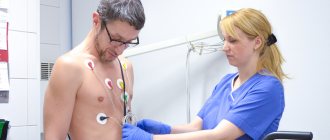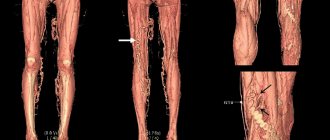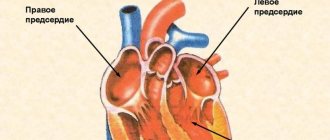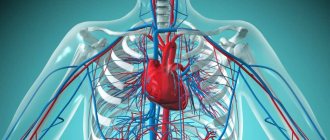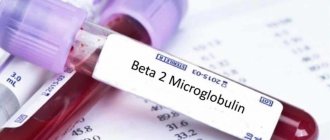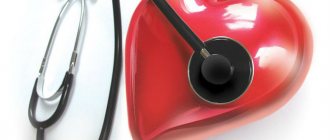The lymphatic system is one of the most complex and at the same time important components of the human body. Safety and health directly depend on it, because the lymphatic system is the first to encounter pathogenic microorganisms and fight them off. When working properly, such a “filter” can resist bacteria, viruses and other foreign negative factors that undermine human health.
In addition, the lymphatic system is a point of removal of poisons, toxic compounds and breakdown products, especially in the presence of an infectious process. In fact, the strength and development of a person’s immune system depends on this function: the healthier and more complete his lymphatic system, the better it resists pathogens and quickly copes with foreign substances that have nevertheless managed to leak into the body. That is why the anatomy of the human lymphatic system is one of the most significant sections in the study of the body. A small medical educational program will allow you to understand the peculiarities of the structure and functions of the lymphatic system, which, in turn, will help strengthen your immune system, maintain health and avoid all sorts of ailments.
The structure of the human lymphatic system
The set of organs that produce lymphocytes (cells that are subsequently capable of producing antigens) and their accumulation, as well as special nodes and vessels, is called the lymphatic system. This part of the body is directly connected to the bloodstream and is adjacent to the arteriovenous network almost everywhere, with the exception of the brain, spinal cord and eyeball - there is no lymph flow in these organs.
Due to the vessels and nodes of the lymphatic system, tissue fluid and special proteins located in the intercellular space are transported into the bloodstream. This fluid, which has not yet entered the bloodstream and is contained in the lymphatic vessels, is called lymph. How does lymph flow occur and the immune response is formed? The answer to this question lies in the anatomy of the human lymphatic system. The special structure of the organs and their specific functionality eliminates the possibility of pathogen penetration, however, this process proceeds without failures only if each element clearly performs its assigned function.
Lymphatic drainage massage
Drybrushing is a massage with a dry brush. It not only saves from cellulite, but also disperses lymph, removes swelling and improves blood circulation. Beauty 365 has a good brush.
Vacuum massage with miracle cans is also very good - swelling goes away, intercellular fluid accelerates and waste and toxins are eliminated faster. Choose what you like best.
Organs of the human lymphatic system
Structurally, the lymphatic system consists of elements such as:
- lymphatic network (trunks, vessels, capillaries) - elastic tubes through which lymph is transported throughout the body;
- lymph nodes are special formations located throughout the body and are responsible for the primary filtration of pathogens;
- lymphatic ducts flowing directly into the bloodstream;
- organs of the lymphatic system - spleen, thymus, tonsils - where the body's immune cells are formed;
- lymph is a special fluid that circulates through the vessels of the lymphatic system.
The composition of lymph is rich
- lymphocytes, the number of which can reach more than 8 * 109 cells per 1 liter;
- single red blood cells, the number of which multiplies exponentially during injuries;
- granulocytes (in infectious processes of various localizations);
- proteins, lipids, amino acids, glycerol, glucose, electrolytes and other compounds that form the ionic lymphatic set;
- cholesterol and phospholipids, which are usually represented in the lymph by lipoproteins; their concentration may vary depending on the type and regularity of nutrition (the greater the fat component of the diet, the higher the percentage of lipoproteins in the lymph).
As for the concentration of protein compounds, it directly depends on the rate of lymphatic synthesis. If a person drinks enough fluid, the concentration of proteins in the lymph is optimal, but when the water balance changes, this indicator changes dramatically. So, with a lack of water in the body, the amount of lymph decreases sharply, which means the percentage of protein molecules increases. And vice versa: the more fluid enters the gastrointestinal tract and, accordingly, into the body, the lower the concentration of protein lymphatic formations.
The structure of primary lymphoid organs
Let us dwell in more detail on the structure of the primary lymphoid organs.
Red bone marrow Red bone marrow in an adult is found in flat bones (pelvic bones, sternum, scapula, ribs, vertebrae) and in the expanded ends of long bones (for example, femur). It contains the stem cells from which all blood cells are formed, including the precursors of T and B lymphocytes. The bone marrow is located in the form of cylindrical cords around the blood vessels. Maturing blood cells and lymphocytes penetrate their wall and enter the bloodstream.
In newborns, red bone marrow occupies all bone marrow cavities. After 4–5 years, in the middle sections of the long bones it gradually begins to be replaced by yellow bone marrow, which is a fat depot. This process is completed by age 20.
Thymus The thymus , or thymus gland, is located behind the sternum. Consists of 2 elongated lobes fused in the middle part. Along with the formation of lymphocytes, the thymus produces hormones that contribute to the formation of immunity. This organ reaches its greatest development during puberty: at 14–15 years of age, its weight is 30–40 g. Subsequently, fatty degeneration of the thymus occurs. By the age of 70, his weight decreases to 6 g.
Human lymphatic system: pattern of lymph movement
Lymph flow is strictly coordinated by the anatomy of the human lymphatic system: even a slight change in this case can lead to irreversible consequences. Normally, lymph flows along the channel from bottom to top, that is, from the smallest capillaries to large ducts, and only in this direction; the reverse flow of lymph is a serious pathology and is normally impossible in principle.
Lymphatic capillaries are the smallest units of the lymphatic system; they begin the lymph flow cycle. On the one hand, they have a closed end, on the other, they flow into larger capillaries and vessels of the lymphatic bed. The capillary walls have a very thin, almost transparent structure, due to which liquid and larger protein molecules seep inside freely, which distinguishes them from blood capillaries, which do not have such a high throughput.
Lymphatic vessels are larger tubes through which lymph moves from the capillaries to the trunks. Their structure is somewhat reminiscent of the veins of the circulatory system, however, as in the case of capillaries, the walls of the lymph vessels are thinner. In addition, inside these vessels there are a large number of tightly closed valves that prevent the flow of lymph in the opposite direction.
On the way from the capillaries to the trunks, lymph enters the lymph nodes located along the vessels. Such formations are divided into groups depending on location. As a rule, each lymph node looks like a small spherical or oval formation about 2 cm in diameter, into which several vessels flow, and only 1-2 exit. This is where the main filtration of lymph occurs - foreign bodies are separated and lymphocytes are produced when pathogens are detected.
Departing from the lymph nodes, the efferent vessels gradually flow into 2 key trunks of the lymphatic system, resulting in the formation of the same number of ducts - the thoracic and the right:
- The thoracic lymph duct begins in the capillaries of the left arm, the left side of the head and internal organs located below the costal line. Its terminal point is the left subclavian vein.
- The right lymphatic duct, accordingly, starts from the right arm, the right half of the head and chest and flows into the right subclavian vein.
In the circulatory system and liver cells, immune processes that began in the lymph nodes are completed, as a result of which the main pathogens are neutralized, and toxins and poisons are eliminated from the body. In addition to the immune reaction, in this way most of the fluid is transferred from tissue cells and interstitial space into the bloodstream. The driving force of lymph flow directly depends on the physiology and anatomy of the human lymphatic system:
- The different diameters of the tubes of the lymphatic system, from the smallest capillaries to large ducts, provide a noticeable difference in hydrostatic pressure, which lifts the lymph: if at the initial stage of the channel the pressure is from 2 to 5 mm Hg. Art., then closer to the ducts this figure gradually approaches zero.
- The vascular walls of the human lymphatic system include smooth muscle cells capable of alternate contraction and relaxation. Thanks to this, lymph can move towards the duct.
- Contraction of the muscle fibers surrounding the lymphatic vessels periodically increases the pressure within the lymphatic system, causing the fluid to flow faster.
Any malfunction, blockage or other disturbance leads not only to the development of a disease against the background of reduced immunity, but also to tissue swelling up to the formation of a non-malignant tumor.
Healthy foods for lymph
- Walnuts - thanks to phytoncide, protective properties increase.
- Carrots - beta-carotene, which is contained in huge quantities in this vegetable, slows down aging, helps produce antibodies and prevents lymphocytes from being destroyed.
- Sea kale - iodine also increases the protective properties of lymph.
- Eggs - they contain lutein, which is involved in the formation of building material for our cells.
- Fatty fish - the right fats make blood vessels healthy and elastic.
And now a little about those foods whose consumption should be limited:
- Alcohol causes vasospasm, and it disrupts the movement of fluid through the vessels.
- Salt – large amounts of salt cause hypertension.
- Canned food, sausages and other semi-finished products are food waste for humans. They cause clogging of our internal filters, which provokes the formation of stagnation and swelling.
How does the human lymphatic system work?
The role of the body's lymphatic system is primarily to resist negative environmental factors, protect against destructive external influences and filter out pathogenic and toxic units that have somehow penetrated into the internal environment of the human body. The human lymphatic system performs functions without which it is unthinkable to maintain the health and vitality of the body, its full functionality and optimal well-being. These functions:
- Protective. This function is provided thanks to the lymphoid tissue of the lymph nodes, which is capable of synthesizing the primary cells of the immune response - lymphocytes, phagocytes and antibodies. The effectiveness of this reaction directly determines whether the pathogen can cause damage to human health, whether the disease will develop against this background and how severe it will be.
- Filtration. Another function that depends on the activity of the lymph nodes. It consists of mechanical filtration of foreign objects that have somehow penetrated the lymph flow. This is how foreign substances, toxins, bacteria and other units alien to the human internal environment are retained.
- Humoral. The anatomy of the human lymphatic system covers more than 90% of the body, which allows the transmission of signal molecules to all organs and tissues. Such humoral connections allow timely synthesis of the amount of biologically active components necessary for the immune response.
- Transport. Thanks to the lymph flow, fluid and other compounds are transported that physiologically cannot immediately penetrate into the bloodstream. A particularly significant role in this process is played by the delivery of lipids into the blood, which enter the lymph in the intestinal sections. In addition, due to the flow of lymph, albumin molecules that have entered the intercellular fluid from other blood capillaries with a high histohematic barrier are returned to the blood. On average, about 100 grams of protein compounds are returned with lymph per day, without which the body’s losses would be irreplaceable.
- Homeostasis. Normal functioning of the lymphatic system ensures adequate indicators of the composition and volume of the interstitial fluid of the body.
- Drainage. With the flow of lymph, excess fluid is removed from the tissues, which is the prevention of edema and tumors. During normal operation of the lymphatic system, this function seems insignificant - its role becomes especially noticeable when the drainage process is disrupted, resulting in significant tissue swelling up to the limitation of motor capabilities.
Lymph cleansing points
Not only the excretory and digestive systems are capable of releasing useless and toxic compounds and breakdown products contained in the body, but the anatomy of the human lymphatic system includes as many as six sites that in one way or another allow you to get rid of foreign and pathogenic molecules. These include:
1. Vagina in women and urethra in men
As a rule, any pathogenic microorganism that has penetrated the internal environment of the human body affects the composition of the secretion secreted by the genitourinary system. And if in women this condition is usually accompanied by heavy discharge, then for men it is much more difficult - for them, unpleasant but painless discharge may be accompanied by itching, burning and sharp pain when urinating.
However, this function of the body is more protective than symptomatic, and does not require special treatment. Together with copious secretions, pathogenic microorganisms and other components that have already been attacked by the body’s immune system come out. Reducing the secretion of these secretions means disrupting the natural outflow of pathogens, trapping them inside the body. In this case, it is much more logical and effective to direct treatment to the source of the problem that caused such a reaction.
2. Gastrointestinal tract
Through the intestines, not only residual food components are removed from the body, but also toxic substances that enter the body from the outside and are filtered by the lymphatic system. The walls of the gastrointestinal tract contain a large number of lymph nodes, in which the main stages of filtering foreign components occur. Through their ducts, these toxins and their compounds enter the intestines, from where they are safely evacuated with feces.
3. Sweat glands
With sweat, unnecessary hormonal compounds, toxins, waste products of pathogenic microorganisms and other substances are released through the skin, the excess of which will sooner or later lead to severe intoxication. The anatomy of the human lymphatic system is designed in such a way as to speed up and facilitate the process of removing these compounds as much as possible, but a thoughtless choice of cosmetics can nullify all the efforts of the body.
By purchasing an antiperspirant deodorant with 24-hour protection against sweating, you block the outflow of toxic substances for the whole day, which are forced to settle in tissues and organs, causing symptoms of intoxication. After which the cycle repeats: new irrigation with modern perfume certainly protects against unpleasant odors and sweat stains, but at the same time completely blocks the possibility of self-cleansing of the lymphatic system. That is why experienced dermatologists do not recommend such cosmetics for everyday use; careful hygiene and light, environmentally friendly perfumes can protect against repulsive amber much better and without harming your health.
4. Nose
The nasal cavity is another part of the body rich in lymphatic formations. This department is primarily responsible for countering airborne infections that enter with inhaled air. The copious secretion of mucus in this case is a protective reaction of the body, and not an unpleasant symptom of a cold, therefore, as in the case of discharge from the genitourinary system, you should not try to dry it out - this will only aggravate the problem and will in no way bring the desired cure closer.
5. Tonsils
Previously, it was believed that the tonsils were a vestigial and completely useless organ that could be cut out without much harm to the body. However, now most immunologists agree that such an operation is the first step towards “killed” immunity, especially regarding inflammatory processes in the throat.
6. Airways
Immune reactions occurring in the larynx in response to incoming pathogens cause laryngitis - a rather unpleasant symptom of airborne infections that could not be stopped at the stage of penetration into the mucous membranes of the nasal cavity. If here the immune processes are not completed successfully, the infectious process can affect the lower parts of the respiratory system: the trachea, bronchi and lungs, causing, respectively, tracheitis, bronchitis and pneumonia.
Lymphoid system: composition, features, localization
The organs of the lymphoid system include red bone marrow, thymus (thymus gland), lymph nodes, spleen, tonsils and lymphoid tissue nodules in the walls of the digestive, respiratory and urinary tract organs. The total mass of lymphoid organs is about 2% of body weight.
A distinctive feature of the organs of the lymphoid system is the constant renewal of the composition of immunocompetent cells and ensuring their circulation in the body. Immunocompetent cells are initially formed in the red bone marrow, where all blood cells are produced. Still immature cells - the precursors of lymphocytes - enter the thymus, where they are transformed into so-called T-lymphocytes (thymus-dependent lymphocytes). Some red bone marrow cells are converted into another population of immunocompetent cells - B lymphocytes. Since lymphocytes are produced in the red bone marrow and thymus, they are classified as primary lymphoid organs. Further maturation of lymphocytes and their interaction with antigens occurs in the so-called secondary lymphoid organs - lymph nodes, tonsils, spleen and lymphoid nodules, where they enter with the blood and lymph flow.
In the human body, the organs of the lymphoid system are not localized randomly, but in certain places. The primary (central) lymphoid organs, where lymphocytes are formed, are located in well-protected places: bone marrow - in the cavities of the bones, thymus - in the chest cavity, behind the sternum. Secondary (peripheral) lymphoid organs are on the path of possible introduction of foreign agents into the body or on the path of foreign substances formed in the body itself. They create unique “security posts” at the border between the internal and external environments. The tonsils lie in the walls of the initial sections of the digestive and respiratory systems (at the border of the oral cavity, nasal cavity and pharynx), forming the so-called lymphoid pharyngeal ring. Single and group lymphoid nodules are scattered throughout the mucous membrane of the digestive, respiratory and urinary tract organs. In these places, immune surveillance of air and food coming from the external environment is carried out. The spleen controls the composition of the blood, freeing it from “old”, obsolete cells (erythrocytes and leukocytes).
Characteristic features of lymphoid organs are their early formation and state of maturity already in newborns, as well as significant development in childhood and adolescence, when the formation and maturation of the body occurs. Subsequently, there is a gradual involution (degeneration) of both primary and secondary lymphoid organs: starting from adolescence, the amount of lymphoid tissue in them decreases, and adipose tissue grows in its place.

